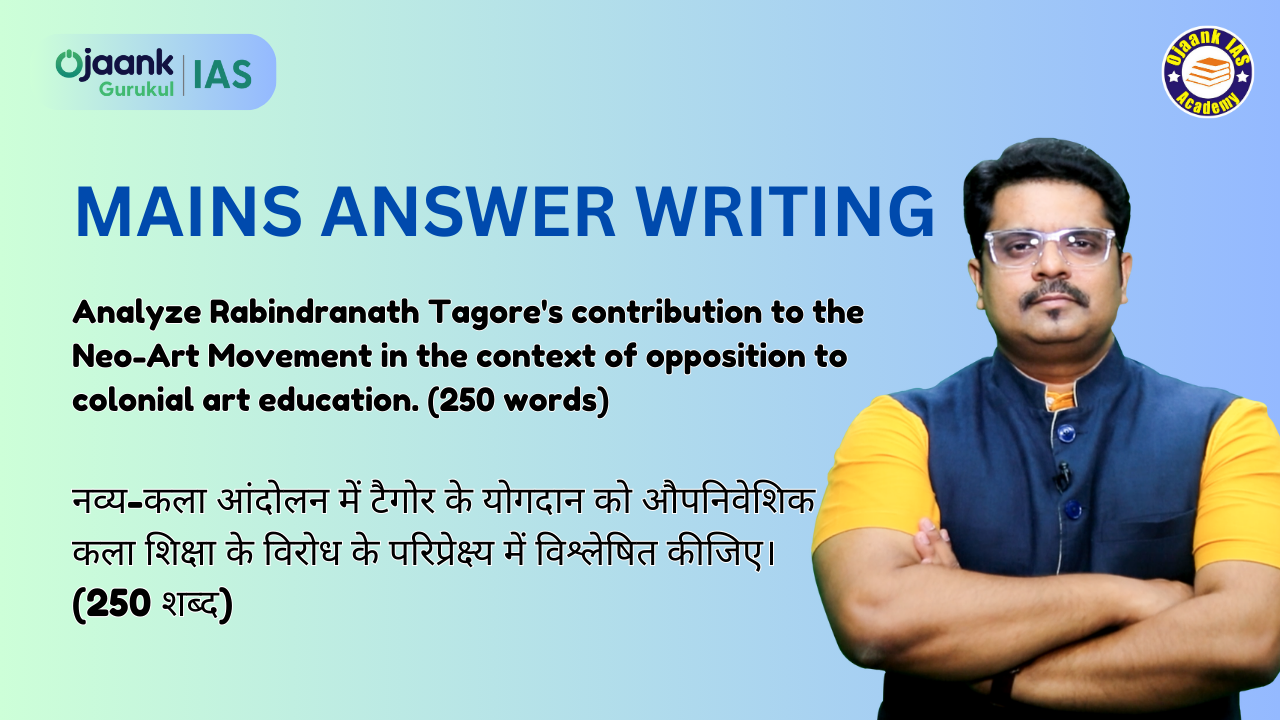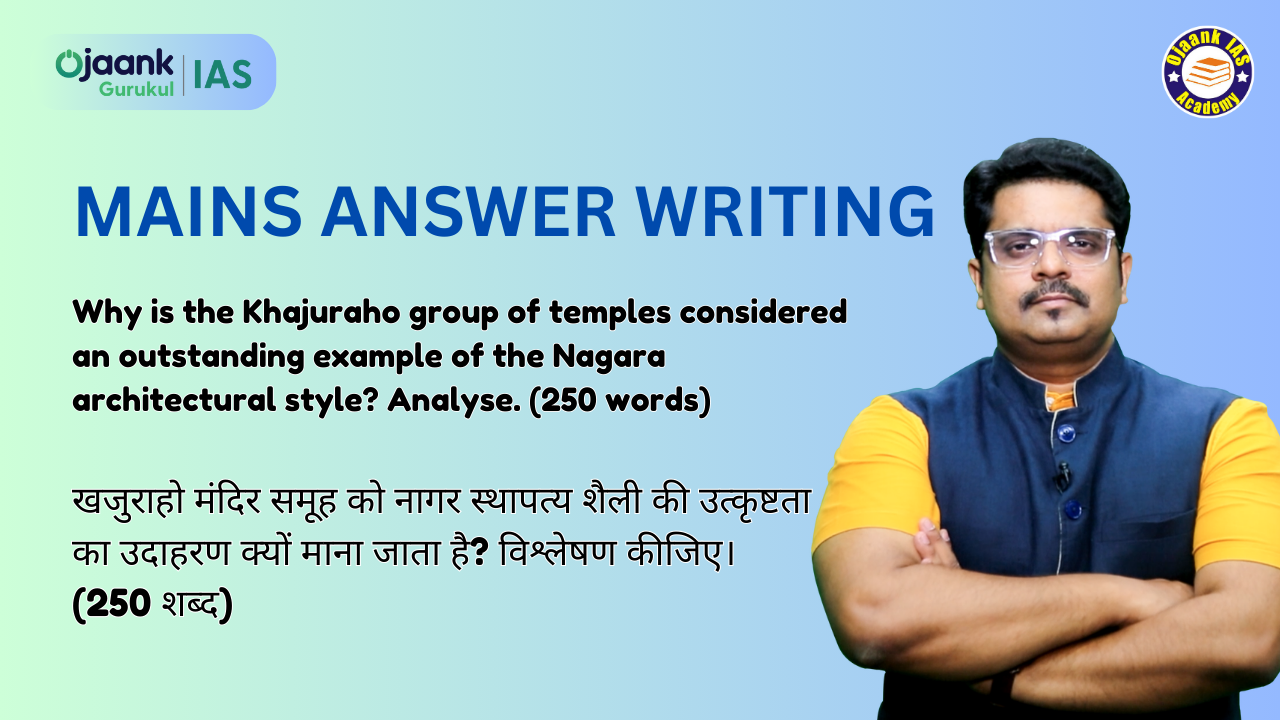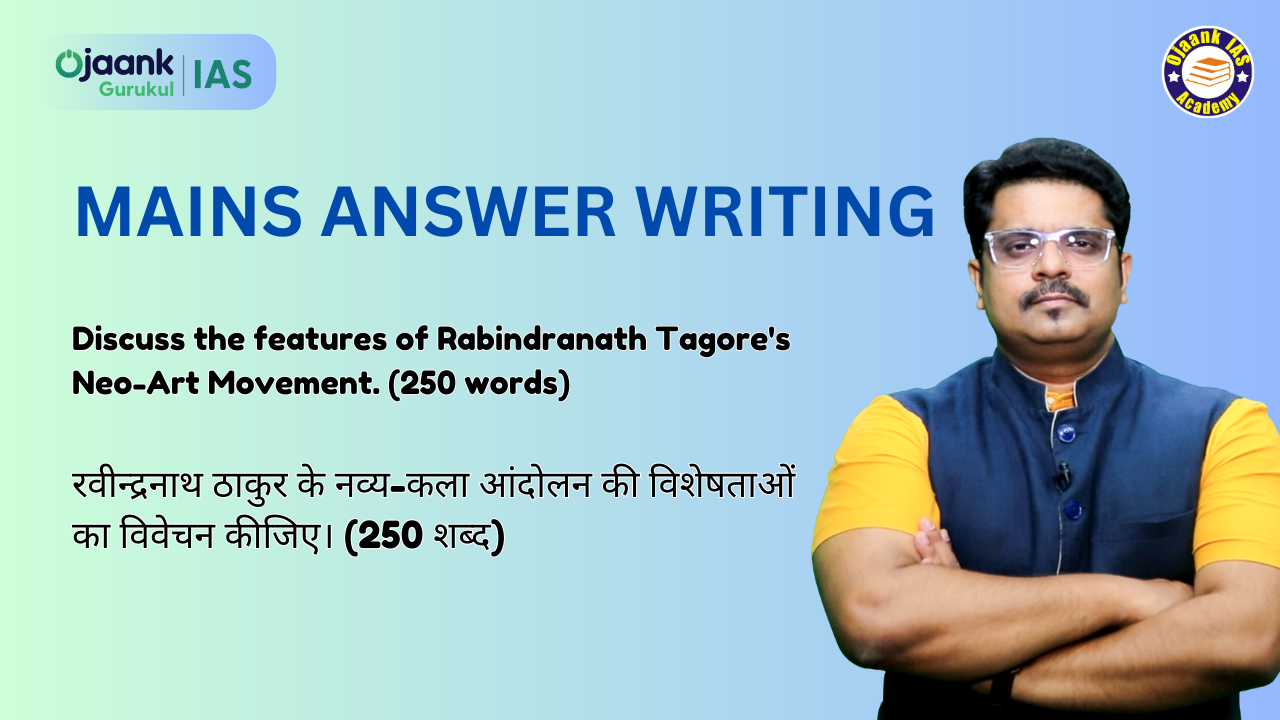Analyze Rabindranath Tagore's contribution to the Neo-Art Movement in the context of opposition to colonial art education. (250 words)

I. Situation of Colonial Art Education:
-
During British rule, art education was based on academic realism—essentially a precise imitation of nature and human figures.
-
This style was incompatible with Indian cultural consciousness and imagination.
II. Tagore's Opposition and Perspective:
-
Tagore called the colonial art system "soulless."
-
He argued that art should be a means of self-exploration and communication with society.
-
Instead of mimicking Western styles, he emphasized Indian traditions, symbols, and emotions.
III. Establishment of Kala Bhavan and Its Impact:
-
Tagore established Kala Bhavan at Shantiniketan, where artists like Nandalal Bose and Binod Bihari Mukherjee were given a platform.
-
The focus was on teaching students creativity, symbolism, and dialogue with nature.
IV. Message of New Direction and Freedom:
-
Tagore's Neo-Art Movement became a symbol of cultural freedom in art and the rejection of colonial mentalities.
-
This movement became the cornerstone of the Indian modern art movement.
V. Conclusion:
-
Tagore not only challenged the colonial art framework but also initiated an art tradition that incorporated both creative freedom and Indian consciousness.
Copyright 2022 power by Ojaank Ias






